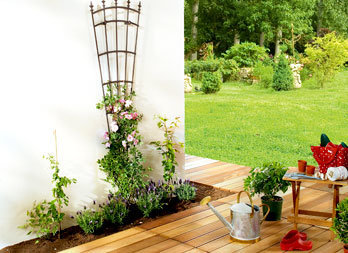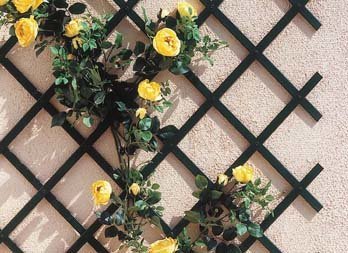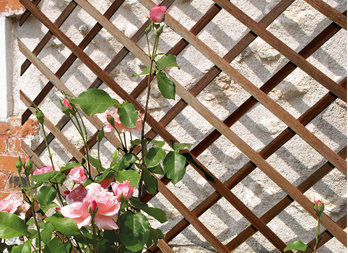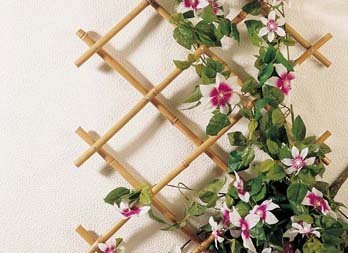The trellis in all its forms
With trellising in all different shapes, styles, shades and materials, the options are endless.
Wood
Wood is a highly aesthetic option for those seeking warmth and authenticity. It will blend in naturally in the garden and goes well with all types of plants. This natural trellising comes in a green colour to blend in with foliage, but can be painted for a more personalised look.
Bamboo
Exotic woods, such as bamboo, don't rot and require no maintenance. Bamboo trellising is ideal for Japanese-style landscaping projects. Black bamboo is currently all the rage.
Wicker
Wicker offers all the rigidity you require to attach an annual climbing plant. It was already used in Renaissance gardens, where it was known for its flexibility and rigidity. Wicker trellising remains discreet and will particularly enhance white or light coloured flowers.
Plastic
Plastic trellises will be appreciated by those new to gardening. They are the modern alternative to wood trellising as they do not rot and require no maintenance. This material comes in a variety of colours: green, white, grey, brown, etc. and has a UV-treatment to prevent colours from fading. This type of trellising is suitable for both traditional or contemporary buildings, depending on the selected colour.
Composite
If you are seeking a trellis that combines the aesthetics of wood with a long lifespan, composite trellising is what you need. It is the perfect imitation of wood and offers better resistance to harsh weather conditions, insects and rot. Plus, it has a UV-treatment to prevent colours from fading.
Indoors?
Lean trellising against the wall of a greenhouse, sun room or conservatory. Used in this way, you'll give your space an opulent look that is reminiscent of the splendid Victorian Orangeries. You can also attach plant pots to trellising.






